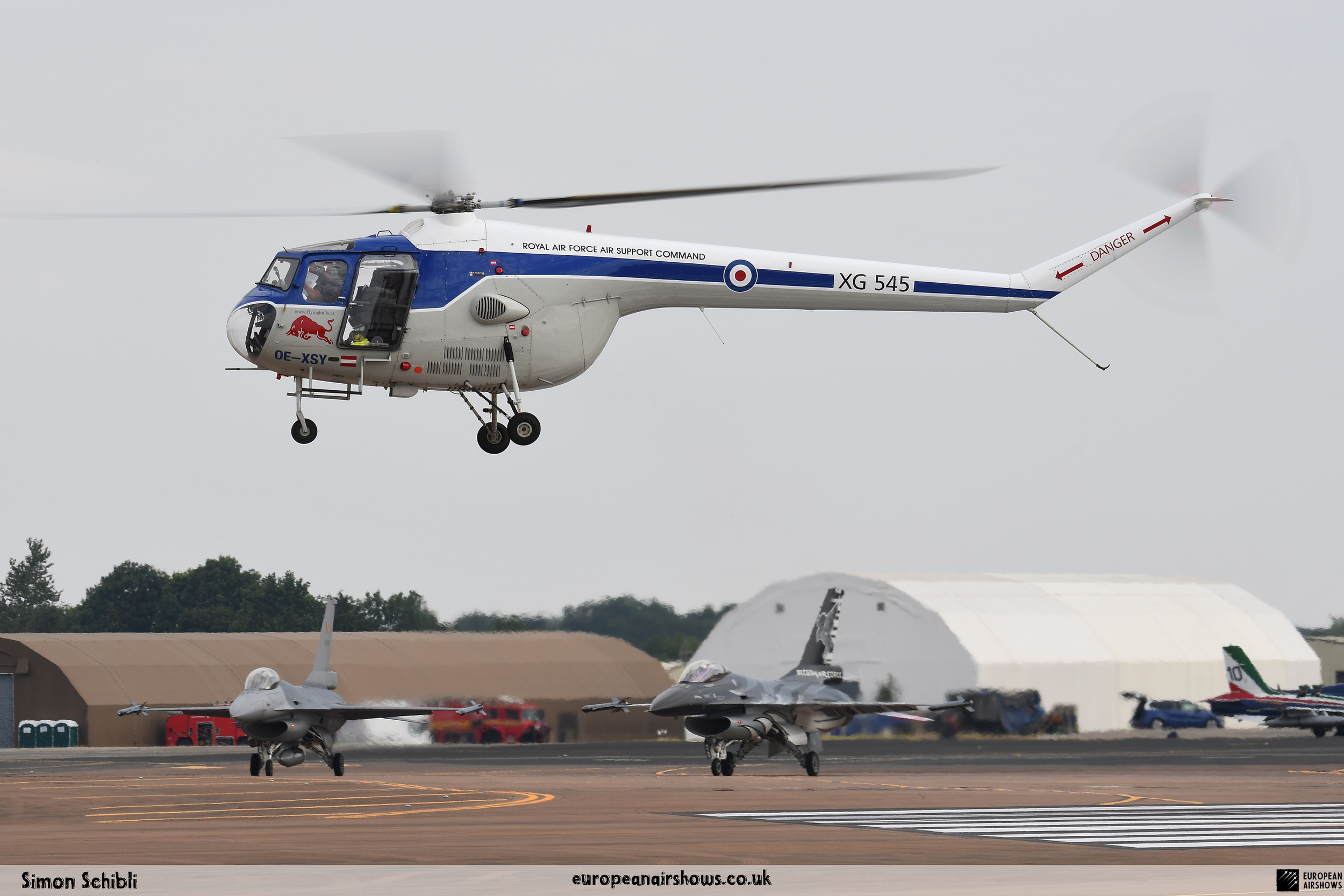
July 26 / Bristol Sycamore first flight
First Flight 27 July 1947
Bristol Sycamore
The Bristol Type 171 Sycamore is an early helicopter developed and built by the helicopter division of the Bristol Aeroplane Company. The name refers to the seeds of the sycamore tree, Acer pseudoplatanus, which fall with a rotating motion. It has the distinction of being the first British helicopter to receive a certificate of airworthiness, as well as being the first British-designed helicopter to be introduced by and to serve with the Royal Air Force (RAF).
Typically capable of seating up to three passengers, the type was often used as a transport for both passengers and cargo alike. In RAF service, the Sycamore was normally used in the search and rescue and casualty evacuation roles. The type proved the value of rotorcraft to easily traverse inhospitable or otherwise inaccessible terrain; the Sycamore made valuable contributions to British military activities during the Malayan Emergency, the Cyprus Emergency, and the Aden Emergency, in addition to other operations.
In addition to its British military service, various models of the Sycamore were produced and operated by a number of users, including overseas military operations and civil customers. Civilian operations typically involved transportation, mountain rescue, and aerial survey work. In 1959, production of the Sycamore ended after 180 rotorcraft had been completed.
During the Second World War, new methods of aircraft propulsion were devised and experimented with; in particular, breakthroughs in rotary aircraft, such as gyrocopters and helicopters, were making such aircraft more practical. In 1944, Bristol established a specialised helicopter division shortly after the Allied invasion of Europe, when engineers from the Airborne Forces Experimental Establishment (AFEE) at Beaulieu became available. The AFEE had been conducting its own work on the development of rotorcraft designs under the noted helicopter pioneer Raoul Hafner; however, the successful use of Airspeed Horsa and General Aircraft Hamilcar gliders during Operation Overlord had led to helicopter development being recognised as a priority. Hafner, whose company had been acquired by Bristol was promptly appointed by the company as the head of Bristol's new helicopter division.
In June 1944, work commenced on the development of a four-seat helicopter intended for both civil and military use; it was out of this programme that the Sycamore would emerge. During development, particular emphasis was assigned to producing the necessary level of endurance of the rotorcraft's mechanical components. On 25 July 1947, the first prototype, VL958, which was powered by a 450-horsepower (340 kW) Pratt & Whitney Wasp Junior (there being no suitable engine in the Bristol range), performed the type's maiden flight. In mid-1948, the third prototype, which had been built to the improved Sycamore Mk.2 standard, was completed; this model had been fitted with a 550-horsepower (410 kW) Alvis Leonides engine, the Leonides engine would become the standard powerplant for all subsequent Sycamore production. On 25 April 1949, a certificate of airworthiness was granted for the Sycamore, the first such to be granted to a British helicopter.
During the flight test programme, Bristol's key development pilots for the Type 171 included Charles "Sox" Hosegood and Col. Robert "Bob" Smith. In 1951, a Bristol-owned Sycamore Mk.2 was used during a series of deck landing trials performed on board the Royal Navy aircraft carrier HMS Triumph. An improved model of the helicopter, designated as the Sycamore Mk.3, was rapidly developed; it featured an increased capacity for five occupants, a wider fuselage and a shortened nose. A total of 23 Sycamore Mk.3s were produced, 15 of which were principally used for joint evaluation purposes by the Royal Air Force (RAF), Army Air Corps (AAC), and British European Airways (BEA).
Versions of the Sycamore up to and including the Mk.3A retained the standard two-seat cockpit layout, placing the pilot in the left-hand seat and the co-pilot in the right. However, on the main production model, designated Sycamore Mk.4, this seating arrangement was switched to the American practice of positioning the pilot's seat on the right. There were also a number of other developments that had featured upon the earlier versions, such as a four-door design, which had been standardised upon the Sycamore Mk.4. This version entered RAF service, receiving the military designation of HR.14.
Civil versions were not marketed under the Sycamore name, they were instead known simply as the Bristol Type 171. By May 1958, over 150 Sycamores had been manufactured and four units per month were being built.
Bristol Sycamore Facts
Design and Development: The Bristol Sycamore was developed by the Bristol Aeroplane Company in the United Kingdom during the late 1940s. It was designed as a multi-purpose helicopter for military and civilian use.
First Flight: The prototype Bristol Sycamore, designated as the Type 171, made its maiden flight on July 27, 1947. It showcased the aircraft’s innovative design and capabilities.
Alvis Leonides Engine: The Bristol Sycamore is powered by a single Alvis Leonides radial engine. The Alvis Leonides engine was a British-designed and manufactured 14-cylinder air-cooled radial engine known for its reliability and performance.
Military Service: The Bristol Sycamore served in various roles with the British Armed Forces, including search and rescue, casualty evacuation, and transport. It was also used by other military forces around the world.
Civilian Applications: In addition to military use, the Sycamore was employed in civilian applications such as air ambulance, aerial survey, and general transportation. Its versatility made it a popular choice for a range of missions.
Variants: Several variants of the Bristol Sycamore were developed, each tailored for specific roles and operational requirements. These variants included the HR.14, HC.11, and Mk.52, among others.
Main Rotor Configuration: The Bristol Sycamore helicopter features a main rotor system with three rotor blades. This configuration provides stability, lift, and manoeuvrability during flight operations.
International Operators: The Bristol Sycamore was operated by various countries around the world, including Australia, Germany, Belgium, and the United States. Its reliability and performance made it a popular choice for many air forces and civilian operators.
Historic Significance: The Bristol Sycamore played a significant role in the development of helicopter technology and operational use. It helped pave the way for future twin-engine helicopters and contributed to the advancement of rotary-wing aviation.
Legacy: While the Bristol Sycamore is no longer in active military or commercial service, several examples are preserved in museums and private collections. The aircraft’s legacy lives on as a pioneering design in the history of helicopter development.




